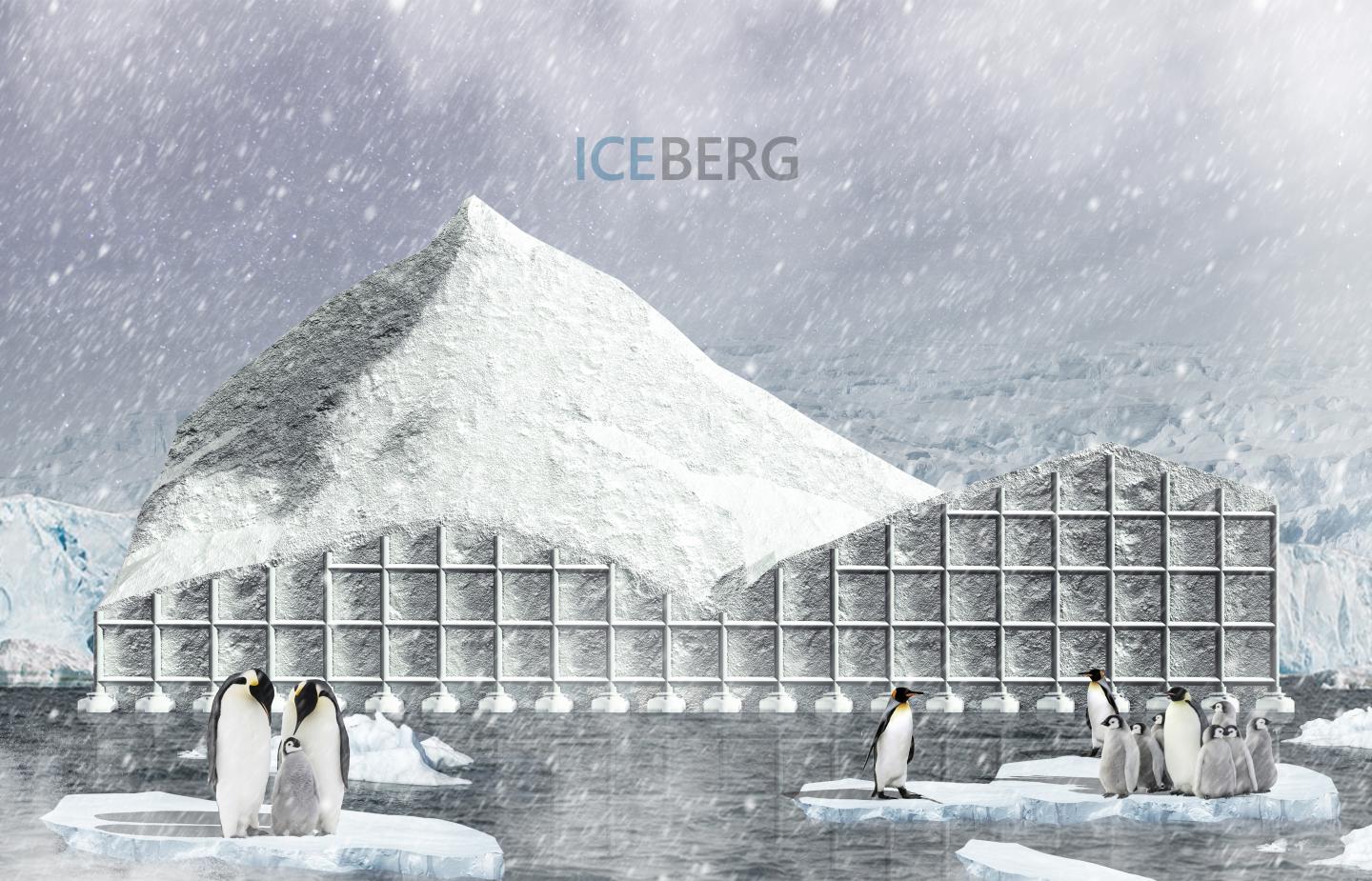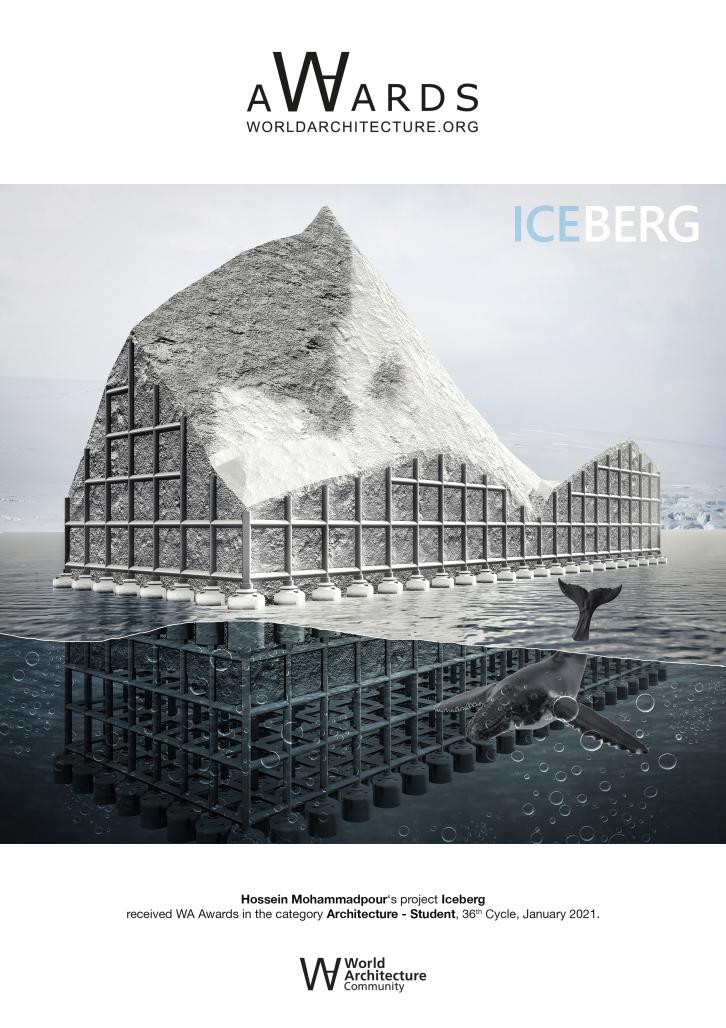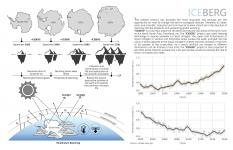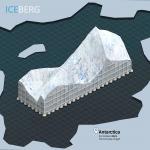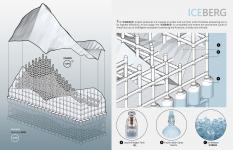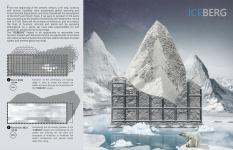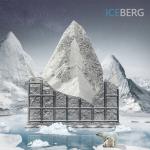ICEBERG
Recreating mountains and ice masses in the Antarctica with the use of the rapid freezing technology of ocean water
The present century has provided the most important and perhaps the last opportunity for man to change the earth's ecological attitude. Therefore, all ideas, plans and scientific, industrial and commercial studies should be in the direction of resolving climate problems and preventing global warming.
"ICEBERG" is a futuristic project to revitalize and rebuild vital areas of the earth, such as the North-South Pole, Greenland, etc. The "ICEBERG" project uses rapid freezing technology to expose seawater to liquid nitrogen. The super-cold temperature of liquid nitrogen in vertical and horizontal tanks causes the water pumped into the vacuum tanks adjacent to the liquid nitrogen to freeze and then sprayed in the form of ice powder to the lower level. As a result, artificial ice masses in different dimensions can be formed in less time. The "ICEBERG" project is also projected to add 30% to the Antarctic surface over a 20-year period, as well as reduces the rate at which ice breaks and melts.
Due to the harsh working conditions in cold climates, the "ICEBERG" project is designed to be fully modular and prefabricated, and all parts can be installed and commissioned within a period of four months. It is predicted that the project will be able to create pieces of natural ice in different dimensions and with natural topography in the Antarctic environment in about 9 months. It is also expected that many of the "ICEBERGS" that have been built over time will become the consensus of various animals and wildlife colonies in the region.
In the Antarctic winter, the "ICEBERGS", due to the decrease in ambient temperature, has the highest efficiency in its main activity, which is freezing, and performs the largest volume of ice mass formation. Also in the summer, due to the increase in temperature and humidity in Antarctica, warmer air and humidity enter the super-cold space of the "ICEBERGS" project and sit on the body of the project in the form of ice and snow particles, resulting in freezing.
From the beginning of the present century until now, humans and human societies have accelerated global warming and environmental degradation, and have threatened the ecosystems of the North and South Poles. If we want to proceed in the same way, according to the studies of scientists and researchers, by the end of 2100, there will be no trace of Antarctica, and as a result, the lives of humans, animals and plants will be seriously endangered. As a result, we must take responsibility for and protect our planet and its living things.
The" ICEBERGS” Project is an opportunity to reconsider how humans interact with the environment. An opportunity to increase the useful surface of Antarctica and thus reduce the level of ocean waters and prevent global warming.
2020
0000
Design features:
• Structural issues:
1. Placement of water storage and pumping sources and vertical reservoirs of liquid nitrogen below the sea level.
2. Installation of reserved oxygen tanks on the water surface to prevent sinking of project facilities.
3. Install the latest vertical liquid nitrogen tanks above sea level.
4. Placement of horizontal liquid nitrogen storage tanks and frozen water micro-pumps
5. Construction and rehabilitation of ice masses below and above sea level
• Environmental issues:
The "ICEBERGS" project could create a large ecosystem and artificial habitat in Antarctica that is fully compatible with the natural ecosystem of the current Antarctic environment. Therefore, the effort to form the plan is to achieve is compatible with the climate of the region, and visually familiar for the animals of Antarctica. At the same, the "ICEBERGS" could extend the life of endangered Antarctic animals by expanding the area of ice.
Mohammad Hossein MohammadPour Parchehbafi
ICEBERG by Hossein Mohammadpour in Antarctica won the WA Award Cycle 36. Please find below the WA Award poster for this project.
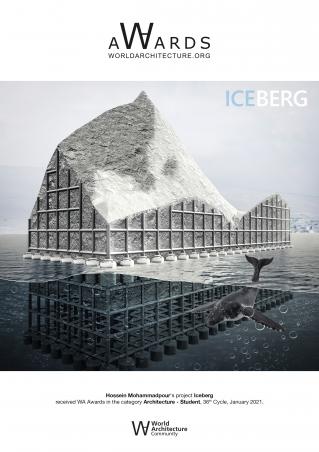
Downloaded 4 times.
Favorited 6 times
